To catch up on the story to date, you can view the archive here.
Here I hesitate. It would be easy to skip this next wave, and I am tempted. Posterity beckons, however, and I am resigned to meet it halfway.
In a sense these are all insertion games, or are derived from previous insertion games — but the characters that they insert are fictitious. They’re all avatars, removed from their original context.
Also removed from context is much of the games’ content. In assembling these games I repurposed hunks of earlier projects, either to avoid losing material that I had cut or to sculpt dioramas of my own adolescent interests. Though I roll my eyes at projects like Tony & Me and Operation Killbot, I was not immune to that mentality.
If anything, I may have been worse. I felt weird about distributing those games as they were, so I snipped out the most foolish bits — and then I kept those for myself, to indulge my own objectives. This was even weirder for me, so if I chose to distribute the games — as I often felt compelled to — I did it under a series of pseudonyms.
It all started with a practical joke.

Around the turn of the ’90s, to be in tune with videogames meant being a fan. Between third and ninth grades, I loved videogames — incautiously, without judgment or analysis. Some games grabbed me more than others. The games that didn’t, I figured I was just too young to understand them. Bugs, glitches, and bad design struck me not as flaws but as figments of scary, unpredictable realities that I was not prepared to handle.
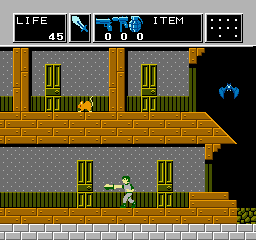
I think that perception comes out of my approach to videogames. For me they have always been about exploring the unknown; playing with new concepts and following them to their logical extremes. When those extremes take me places that I would not have imagined without that structure, I feel wonder. When something breaks that structure, I feel a stab of cognitive dissonance that offers a window to a greater world view. As wonderful as the structure may be, the idea that there’s something beyond it, that I am not yet in a place to understand, gives me a certain awe. So, I was really into games like Zelda, Metroid — and eventually things like the Game Genie.

When they began to appear, game magazines fed into the mystique, suggesting unknowable depths and hints of what was to come, both within an individual game and within the medium as a whole. The magazines were a way in, and the best outlets made a person feel like there was a real conversation going on. I wasn’t just bashing my head on these worlds and forming my own opinions; I had a few hints at what their authors intended, or what I should be looking for. I could then better focus on the games, and better understand what they had to say. I knew that there was always more to know, more to find just beneath the surface.

I read whatever magazines I could find. There were only so many at the time. I subscribed to Nintendo Power, and enjoyed the early issues. Heck, I subscribed even before it was Nintendo Power. Even before the newsletter became a glossy magazine! It was just pinkish folded-over paper stock. GamePro was sort of the standard, so I read that. When I could find it, I puzzled over VideoGames & Computer Entertainment. That one was often a little headier, and it covered many topics that I didn’t understand. Its back pages were also where I saw my first ad for RSD’s Game-Maker.

As an adolescent, the magazine that struck the best balance for me was EGM. I don’t remember why I so enjoyed it. I think the Review Crew may have had something to do with it. By that time, games were coming out rapidly for several systems. It was getting hard to keep up with everything. To cover as much ground as possible, three of the magazine’s editors and one fictional character would offer short blurbs about each game. Although they never commented in much depth, the blurbs were lined up in columns so you could cross-compare their responses.
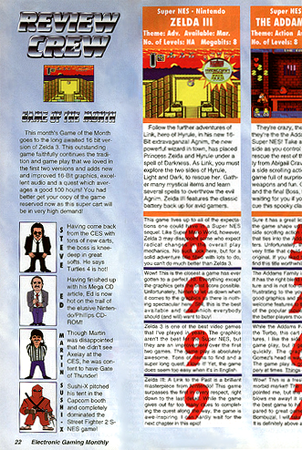
In retrospect the format was not only lazy; it was lifted wholesale from Famitsu, the Japanese magazine that Western gamers held as a gold standard until people began to translate the reviews and realized they had nothing interesting to say — and that what little they did say was bought by the game publishers. At the time, though, it just added to the sense of an ongoing conversation. I was fascinated that the writers all had contrasting views to offer on each game that came along. This probably lined up with my sense at the time that there were no bad games; just games that weren’t made for me.

The most intriguing of those writers was of course the fictional one, a mysterious fellow named Sushi-X. He dressed like our cultural consciousness of a ninja and obsessed over tournament fighting games. In reality he was a placeholder for whatever intern wanted to contribute an opinion or whatever editor wanted to speak anonymously. That would not become clear for another decade or so. In the early ’90s, Sushi-X was the coolest dude in the coolest band of game journalists. Which is to say, a boy’s club that set the stage for twenty years of stunted and exclusionary gamer culture. But hey, adolescents look up to big kids.
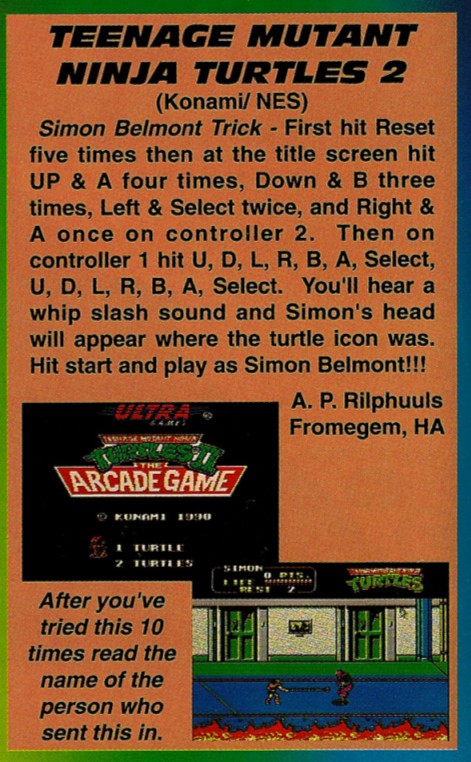
One of the club’s more memorable shows of adolescence was its yearly April Fools pranks. In 1991 they insisted that with the right code you could call forth Castlevania III‘s protagonist into Teenage Mutant Ninja Turtles II. It sounded plausible, as both games were by Konami, and it played into that vague sense that anything could be out there. The following year brought the Sheng Long prank, which was reported as fact worldwide, and in changing people’s expectations for arbitrary nonsense changed the way that fighting games were designed and perceived.

By 1993 I had a good three months of experience with Game-Maker, so I felt ready to play my own prank on EGM. I borrowed resources from A-J’s Quest, drew approximations of EGM’s Review Crew avatars, and sent Sushi-X on a quest to locate a fabled Street Fighter II arcade cabinet. Along the way he faced the logos of competing magazines, and could regain energy by picking up issues of EGM. I credited the game to Sega, and sent it in anonymously with plenty of lead time for the April issue, to see how they would react.

They didn’t. Fair enough. The game was kind of terrible anyway. The best part was probably the sound clips. The monsters had an entertaining death noise, and whenever Sushi-X found an issue of his parent magazine he would sing the praises of his publication. I quickly forgot about the game, only to unearth it when looking for material to scavenge in the assembly of Tony & Me and Operation Killbot.

A few of the background tiles also made their way into Sign of the Hedgehog, which perhaps justifies this prank a little further. Also as my second attempt at a platformer, Sushi-X Breaks Loose probably taught me a pile of lessons in what not to do. I don’t believe that I repeated my mistakes here.

The negative lessons continued with Dusk Rose, a game based around an early Dungeons & Dragons character.

My history with D&D began in eighth grade. The way my associates pitched it to me, a person could make any kind of avatar he wanted; give the character whatever history and personality and talents one desired. In absence of ready game design tools, the notion fired my imagination. I sketched characters; I wrote ornate backstories; I developed quirks and abilities to set them all apart and open up play potential. Mark — you remember, from Operation Killbot — appreciated none of this.

Somehow Mark declared himself Dungeon Master for every campaign. If people planned a game without him, he would flip out. I remember an instance where he screamed at someone for buying a Dungeon Master’s Guide, because only Mark was supposed to know all the rules. Authority was everything to this guy. If a player diverged from the letter of TSR’s guidelines, or failed to take the campaign seriously enough, Mark would turn strawberry red. Often he would kill the player’s character right there, out of spite. He would then take the character sheet and refuse to return it. In time role-playing with Mark (and there was no role-playing without Mark) became a matter of gaming Mark’s temper; setting up situations to draw out and maximize his anger, so that the players could all watch him fume. By tenth grade we got pretty creative.

I believe my first AD&D character, after I graduated up from the basic rules, was a half-Elven thief named Dusk Rose. Although I remember little of it, I put especial work into her character. On her first day out, I failed to adequately respond to Mark’s cues so he killed her. He then took from me the character sheet and supplemental material, rendering all of that work moot.

With Game-Maker, I felt she had a second chance. I figured if I could adapt a few basic rules, then I could allow my character the life that she was denied on paper. The first and most basic test was the AD&D thief skills: hiding in shadows, picking locks, moving silently, disarming traps, climbing walls — you know, all the stuff that Looking Glass explored five years later.

None of it worked. For some failures you can blame my technique. To make Dusk Rose hide in shadows, I colored her shades of black and dark gray, and had her perch in the background. That was silly for a bunch of reasons. Later I perfected the idea in A-J 3; there, you can hold the space bar to turn a certain character invisible.

Other failures are more about the engine’s limits. There are several ways to implement wall-climbing, but all have their downsides, and none work quite as I wanted here.
I was also intent on including adult material, to reflect my detailed imaginings of the character. To hide the material, I imagined and partially designed some branching paths. If the player made certain anarchic choices, he could stumble into some bawdy situations. Otherwise, the game would continue without a suggestion of what lay beneath. Although I later removed these elements, the branches and parallel paths were an early hint of the techniques I would later use in games like A-J 3 and RÅdïp.

Given the common origin, Dusk Rose became a spin-off of Cireneg’s Rings. Although I never finished the game, it does serve to flesh out the game world.
That world is even further fleshed out in Dungeon Erghuck, a game of many sources and a source of much embarrassment.
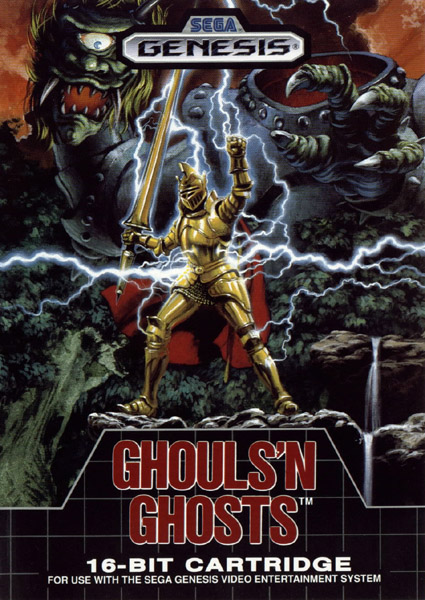
Back when game magazines came with photographic maps and reviews amounted to a few quips about graphics, the best source for detailed and up-to-date information was a game’s own packaging. The box art evoked a mood and a theme. The template made the game feel like a part of a collection. The warped screenshots and back-of-the-box copy spun the game as a whole world to explore and marvel over.

Selecting a game was a matter of standing to the side of the register at Kay-Bee Toys and peering at the racks of box fronts. When one caught your eye — either a new game or one you might have pored over a dozen times already — you asked the clerk, and she would pass you the game. The shrink wrap gave the cardboard (or clamshell case, if we’re talking Sega) a sheen and a certain smell. There was a whole world in there.

You would stare at the painting on the front, and try to extrapolate the action and experience of playing. With that in mind you would flip the box and animate the screenshots in your head. What were those creatures? What was just off the edge of the screen? What was the character doing, exactly? The text below would offer context and promises.
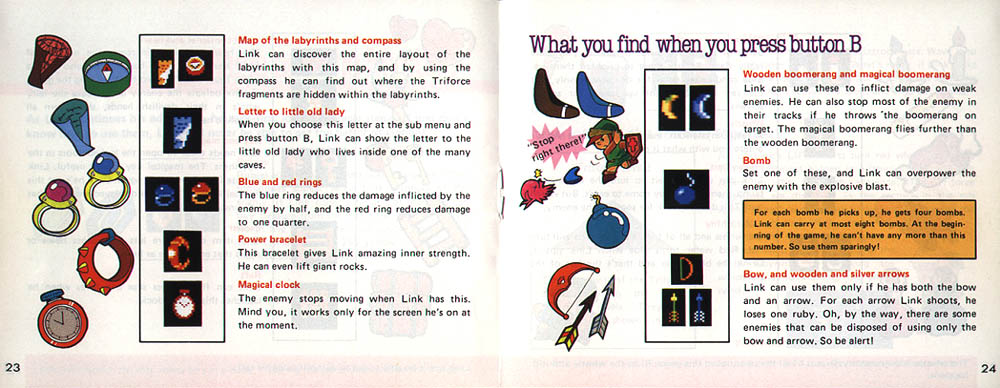
If the box churned up just the right image, and your parents were amenable, it would go under the scanner and into a paper bag. In the back seat of your parents’ car you would strip away the cellophane, pull out the instructions, and memorize them. The notes and sketches would kindle the imagination, as it worked to sketch out the whole game before you even played it. The odor of the packing material would drift out, rousing some center of your mind with the reality of something new and marvelous at hand.
So it is that one trains one’s self to derive huge and nuanced concepts from just a few shreds of information, and sets a game up for wonder before even hitting the first glitch or passageway.

For me, Game-Maker was a birthday present — one that arrived early. I was allowed to hold the box, and look at it; I just wasn’t allowed to open it or install it on my father’s 286 until I turned 14. For weeks until then, I was entranced with the screens strewn across the box front. It’s like they were trying to kill me with sheer potential. The back of the box gave no hint at limits; only the possibilities that the tools provided. I had no clue where to stop imagining.

Without context, I filtered the screenshots through my knowledge of PC games and tried to find broad matches. My knowledge was largely informed by a disk passed to me anonymously, I think originating in Russia. Those disks were crammed with mostly very old CGA DOS games like Alley Cat and Jumpman. I took Pipemare‘s tile set as an experimental climbing game like Tower Toppler. Another game (as I recently learned, the first experiment by RSD president G. Oliver Stone) reminded me of the box to Deadly Towers, an NES game I had never played but often studied in the mall.

As it happened, the box included no such game. Also, Game-Maker was not built for such oddball games as Tower Toppler or Alley Cat. Yet these images persisted, mingled with the haunting memory of that Russian disk. When I reached a certain comfort with the tools, I set to reconstructing RSD’s dungeon game according to my ideas of how it might have been.

Around that time I began to think better of the bawdy extras in games like Cireneg’s Rings, Tony & Me, and Dusk Rose. The problem with deleting it from the parent games is that I felt I had to put this content somewhere. I throw nothing away. Somehow, then, it made sense to dump all of the crude pixelated smut into the dungeon levels. They were vacant, and a borrowed idea anyway.

In its earliest form, then, Erghuck involved wandering from room to room, each one presenting a censored piece from a different game. To make it all cohere, I adjusted the character models into fantasy archetypes. The main character became a Drow Elf, and others gained various pointy ears and mellifluous names. Where they fit, some of the names, such as Si’Nafay and Melwen, were borrowed from deceased AD&D characters.

For a title screen, I turned back to that Russian disk and an EGA port of Artworx Strip Poker II. This was the era before Internet porn, so an adolescent took whatever nudity he could scrounge up. A few adjustments in Deluxe Paint, and there was little question as to the game’s contents.
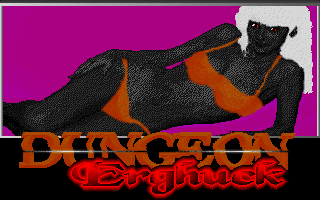
At first, that’s all there was to Erghuck; fantasy porn rooms. Gradually I refined the game. It gained a story, and as with Dusk Rose I set it in a corner of the world of Cireneg’s Rings.
Choosing to hide my identity entirely, I prepared to release the game under the “Janet L. Groth Productions” label. I never quite dared to upload it anywhere. For a while I also toyed with releasing Operation Killbot and Tony & Me under that banner, to a similar dead end.

Later I revised the game again, toned it down, and made it a coherent adventure. Whereas Erghuck began as a pile of naughty bits, I rehabilitated it into a mildly suggestive adventure along the lines of Steve Meretzky’s Leather Goddesses of Phobos, except lame and pointless. Although the content no longer bothered me, there was no real object to the game except to escape, and that’s no real challenge.
Still, in its final form it again brought life to some of my old characters, and it served to hint at further dimension to an existing world. If that’s my lowest ebb as a game designer, I guess I could be worse off. And indeed, from here things just get better.
The story continues in Part Seven…






























